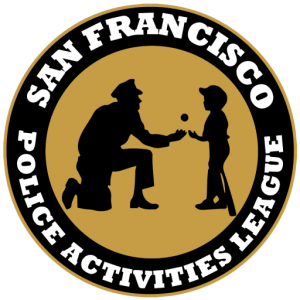Judo Master Bill Wong: Hooked on Judo

Bill Wong instructs students in his SFPAL judo class.
Bill Wong was working as a cook in 1975 when a co-worker invited him to check out a judo class the friend taught.
Judo? He was curious. The 21-year-old Wong showed up at the Hall of Justice where the PAL Judo Club class was taught and quickly realized that, apart from the instructor, he was the only adult in a room full of kids. Nevertheless, he started showing up each week. After two months, his friend challenged him to take on a young boy.
At the time, Wong was a white belt — a beginner. Nevertheless, he weighed 200 lbs and was strong. His opponent was a green belt — an advanced beginner — but was only 12 years old and weighed a mere 90 lbs.
“The first thing I remember, the boy grabbed me,” Wong remembers, “and before I even could do anything, the boy threw me. I just had to laugh. Because how the heck did this little boy throw me? I used to play football in high school! I was very athletic.”
It was at that moment that Wong got hooked on judo.
“I thought, what the heck is this? I’ve got to learn this! … That kid tossed me like I was nothing. That was the mystery of judo.”
Wong was lucky to have three great instructors in the PAL program. His friend and co-worker Visuth Presertsamran was a 1968 Grand Champion of Thailand. He was Wong’s first teacher and got him started on judo.
Wong simultaneously began studying under Head “Sensei” (teacher) George York, who, at 59, would win the 1979 National Senior Judo Championship. Wong also occasionally took classes with Judo Program Director Joe Mollo, who was recently inducted into the SFPAL Hall of Fame.
Wong became a regular at the Saturday morning judo class. After six months, York recruited him to compete in a tournament. “I made all the excuses not to compete. I said, I don’t know the rules! I don’t have a uniform! They lent me the uniform. … I hardly knew anything. But lo and behold, I placed second in that tournament.” After that, he was gripped by “competition fever.”
He competed in tournaments, won a string of awards, and was promoted to first level brown belt. Among his honors: Most Outstanding Technique award given by the San Francisco Judo Institute. At the end of four years, he attained the first degree of black belt.
“Then I got serious,” he says with a laugh. He became right-hand man to York and started getting into what he called the “politics of training.” This meant learning the rules and regulations of judo tournaments, as well as how things work within various judo organizations, including the U.S. Judo Federation.
His new teacher was Peter Van Hestler, a Dutch judo master and close friend of York. Van Hestler was distinguished by his friendship with three-time World Champion and 1964 Olympic Champion Anton Geesink — one of only three 10th degree red belts in the world, the highest judo ranking.
“He used to throw me around like a wet rag,” Wong says. “His techniques of judo were so smooth. … Sensei Van Hestler held my uniform with the lightest touch. If fact, I never ‘felt’ his touching of my uniform. He would throw me in seconds upon holding my uniform.”
Wong calls him a true master of judo. But one day the student became the master. “I was able to throw him flat on his back. I said, Oh my god, I threw my own instructor!”
When York retired in 1991, Wong took over as head instructor. He became program director in 2000 when longtime director Joe Mollo retired. Today he has his 5th degree black belt.
The judo program has had its ups and downs over the years. At one time, there were more than 40 kids enrolled. Currently Wong coaches nine judo students who range in age from 8 to 17, including three girls.
All are new except for two: 17-year-old Sam, who has studied under Wong for seven years and who leaves SFPAL at the end of the school year for college, and 8-year-old George, a yellow belt who has been in judo only a year and already won 2nd place in a tournament.
Over the years, Wong’s judo students have won state and national championships, including 1st place in the USJF Jr. Judo National Championship and 1st place in the National Judo College Championship.
Wong remembers one 8-year-old girl, Che, who in 1983 competed in her first judo contest against six opponents and beat all six. However, the opponents were all boys. In judo, girls compete against girls, while boys compete against boys. “I guess the officials thought she was a ‘he,’ ” Wong says.
He dreams of building up the program and bringing in an assistant, but lacks a budget to market the program. In addition, judo faces competition from other martial arts as well as popular sports teams like soccer and basketball.
“Judo has a big drop-out rate,” Wong says. “It’s not for everyone. I teach it as a sport and try to make it fun.”
The kids have to be willing to be thrown and pinned to the mat. They have to work at judo. But “the ones that do stay, do very well and become good competitors and champions.”
Judo is open to kids ages 7 to 17. Classes are held three times a week at the Mission Recreation Center. Registration is year-round. The registration fee is $60 and includes membership in the United States Judo Federation. For more information, visit the SFPAL website at www.sfpal.org/judo.


